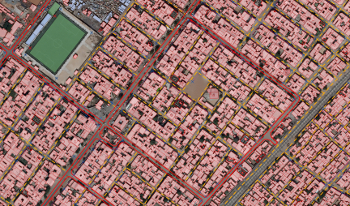Resource Spotlight: Geospatial Analysis in Global Health M&E
Geospatial Analysis in Global Health: A Monitoring and Evaluation Guide for Making Informed Decisions provides monitoring and evaluation (M&E) practitioners an overview of geospatial analysis techniques applicable to their work. This guide shows how geospatial analysis can be used to support public health program decision-making along with routine planning and M&E.
The use of geographic information systems (GIS) for M&E of health programs is expanding. As a result of this expansion, a growing number of users are seeking to move beyond basic GIS techniques (such as facility mapping), into more advanced GIS applications that combine various GIS techniques, outputs, and routine M&E datasets to conduct geospatial analysis. However, knowing which advanced analysis approaches are most relevant for M&E can be challenging for M&E professionals with limited formal GIS training.
To identify the most appropriate spatial analysis techniques and help M&E professionals understand how to incorporate them into M&E, MEASURE Evaluation convened an experts meeting on Spatial Analytical Methods for M&E in December 2013 in Rosslyn, Virginia.
Meeting participants recommended the development of a guide to give M&E and GIS practitioners an overview of how to select appropriate geospatial analysis techniques to help overcome the drawbacks of commonly used M&E data. This guide provides examples of ways to apply geospatial analysis within the context of M&E, along with resources for additional information if needed.
Please see the resource Geospatial Analysis in Global Health M&E
For more information please see the Information Technologies and Monitoring & Evaluation subject areas.
[adapted from resource]
Past Resource Spotlights
- 595 reads





